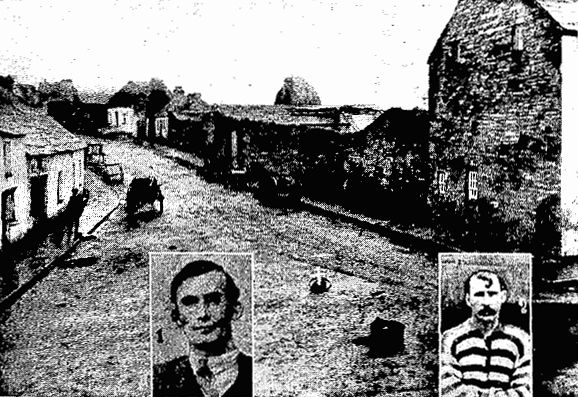Terror in Clare – attacks in Kilmihil and Miltown Malbay leave five dead
Ennis, 21 April 1920 - Five men have been killed amid ongoing disturbances in west Clare.
Two of the deaths occurred in Kilmihil, where fighting erupted on 18 April between police and civilians. Revolver shots were fired leaving Sergeant Carroll, of the Royal Irish Constabulary (RIC), and a civilian, Michael Breene, dead. A third man, Constable Collins, was severely wounded.
Early accounts from the scene suggest that the police came under attack near the local church, a short time after the conclusion of the early 7am mass.
It appears that some of the RIC constables involved were armed with bombs which they hurled into the crowd as they rushed to the scene, causing people to scatter in all directions, into houses and across fields.
Miltown Malbay
12 miles away in Miltown Malbay a similar incident occurred on 14
April, when a crowd, including children under 15, that had
gathered around a lit tar barrel to celebrate the release of the
Mountjoy hunger-strikers were fired upon by police and
military.
Three men were killed and nine were injured in the attack. Some of the injuries were incurred in a stampede which followed the discharge of the guns.
The dead have been named as Patrick Hennessy, a 30 year-old small farmer from Miltown Malbay and a father of two; John O’Loughlin, an unmarried tailor from Ennistymon; and Thomas Leary, 33, a married father of 10 children from Miltown Malbay.
The Bishop of Killaloe, Michael Fogarty, has written to the local parish priest in Miltown Malbay, urging restraint in response to events there and in Kilmihil. Dr Fogarty noted that without firing a shot, the will of the people had defeated conscription and forced open the gates of Mountjoy and this was proof that moral force was more powerful than the strongest tyranny.
Also in Miltown Malbay, on the same night of the shooting, two young women had their hair cut off by a number of unknown men for keeping company with soldiers. The girls, who are now wearing wigs, had been given repeated warnings in advance to avoid soldiers.
Myles Dungan analyses the conduct of intelligence operations in the Anglo-Irish conflict from 1919 to 1921. And, how Michael Collins cultivated a network of moles and informers, in key areas of the British Administration via the RTÉ History Show.
[Editor's note: This is an article from Century Ireland, a fortnightly online newspaper, written from the perspective of a journalist 100 years ago, based on news reports of the time.]





















